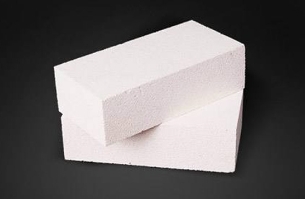- 19
- Sep
Кирпич муллитовый изоляционный JM30
Кирпич муллитовый изоляционный JM28

Характеристики теплоизоляционного кирпича из муллита JM28
1. Low thermal conductivity: It has a good heat insulation effect and can make the thickness of the furnace wall thinner.
2. Low heat capacity: Due to its light weight and low thermal conductivity, the lightweight mullite brick series products accumulate very little heat energy, and the energy saving effect is obvious in the intermittent operation of the kiln.
3. Low impurity content: It has very low iron and alkali metal low melt content, so it has high refractoriness. The higher aluminum content makes it maintain good performance in a reducing atmosphere.
4. Точный размер внешнего вида: ускорить кладку, кирпичные швы тонкие и аккуратные. Убедитесь, что кладка имеет высокую прочность и устойчивость. Ему можно придать особую форму, чтобы уменьшить количество блоков и стыков.
5. It can be used as the backing and heat insulation layer of hot surface refractory lining or other refractory materials. It can be used in smelting furnaces, firing kilns, flues, refining devices, heating devices, regeneration devices, gas generators and pipes, soaking furnaces, Annealing furnace, reaction chamber and other similar industrial thermal equipment.
к
Способ производства муллитового изоляционного кирпича JM28
1. Using the foam method to make lightweight mullite bricks is to mix foaming agent, stabilizer and water in a certain proportion, first make foam liquid, then mix with the slurry, and then cast, cure, dry, bake and burn. Finishing and other processes to produce lightweight mullite bricks with high porosity. Although it can produce high-quality lightweight mullite bricks, it has many procedures, is more complicated, has a long production cycle, low production efficiency, and high cost.
2. The additive burning method to produce lightweight mullite bricks is to add some combustible additives to the ingredients, such as wood chips, polystyrene, coke, etc. When the brick is fired, the combustible additives burn rapidly, and the location of the additives Become a stomata. This kind of brick with high porosity and low density becomes a lightweight mullite brick. The method has simple production process, short production cycle, low cost and high production efficiency. The production of light-weight mullite bricks by gasification method refers to the introduction of substances that can play a chemical role in the ingredients to produce gas. The use of chemical methods to obtain bubbles, thereby producing bricks with high porosity and low density. The production process of this method is simpler than the foam method, the production cycle is longer, the cost is higher, and it is rarely used in actual production. According to the actual situation of the special refractory material plant, the additive burning method is finally used to produce lightweight mullite bricks.
3. The additive burning method produces light-weight mullite bricks. There are three molding methods: vibration, pouring, and manual ramming. Vibration molding produces lightweight mullite bricks, with short cycle time and high production efficiency, but the quality (especially density) is difficult to control; the casting molding cycle is long, the production efficiency is low, and the cost (mold cost) is high; manual ramming molding production The efficiency is low, the cost is low, the labor intensity is high, and the quality is difficult to control.
